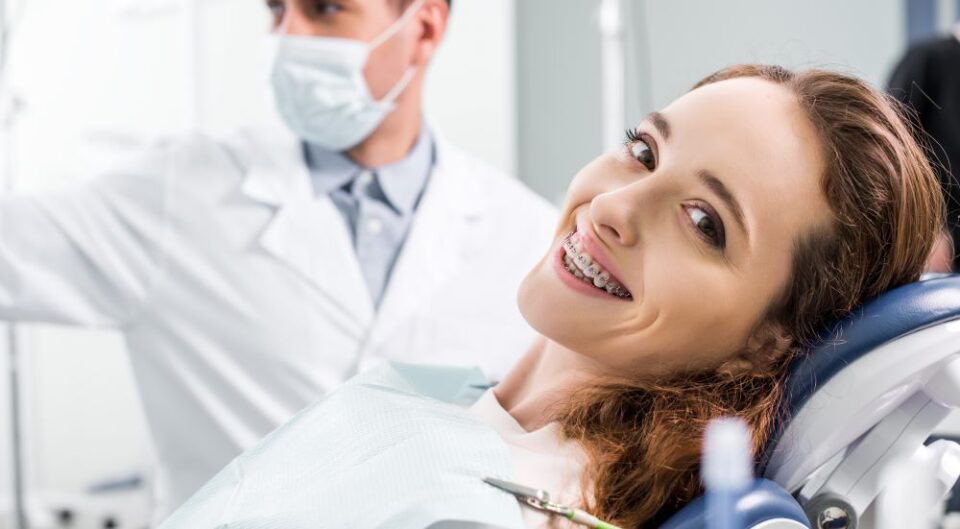by Dr. Iva Manevska
Today it’s clear that malocclusion affects a person’s self-confidence and everyday interaction with others. As a result, in part, having braces has become more of a fashion accessory than ever before. Even models in some of the latest fashion campaigns have braces and are not intimidated by them. But while more people want to have braces, once they are in treatment the first question they ask after the band up is, “When are they coming off?” What happens in between, and how can we prevent this? How do we as orthodontists deliver treatment while maintaining the motivation level of our patients?
Large orthodontic appliance manufacturers and companies are now present in our everyday lives, and those of our patients. Technology is a major part of orthodontic treatment. We have a myriad of appliances and protocols which promise all of us – the teenager on his Facebook page and the adult who never had the courage to undergo treatment – a faster, invisible and painless orthodontic experience. So, how can we stand out here? There isn’t a universal formula or a magical approach, but there are basic characteristics which differentiate the great orthodontist from a good orthodontist.
First, we must understand the human psychology and motivation patterns. Every patient is unique. We don’t just straighten teeth; we help the bullied child, the shy boy in the back of the classroom, the girl who wants to become a movie star, the next Mark Zuckerberg. Orthodontic treatment can be more effective and successful when patient compliance is present. The role of the clinician is to find the key approach that will empower individual patients. Our responsibility is to understand the patient, and it all begins with the attitude of the orthodontist. The effectiveness of treatment depends on the positive attitude and effort of the orthodontist. Here are five tips for providing the most effective and pleasant orthodontic treatment that will keep your patients motivated:
1. Make the Office and Treatment a Positive Experience
Positive psychology has the potential to change people’s lives. The orthodontic office should be friendly, relaxed and professional. Everyone is in a constant rush to achieve something, go somewhere or create something. Everyone has some kind of inner struggle or fight. So, one thing we can do for our patients is to make the time spent at our office as enjoyable as possible. Always make positive notes about the progress and ask, in a kind manner if the hygiene or cooperation is lacking (while explaining the benefits). As a result, when the patient thinks about treatment, positive thoughts come to mind.
Apply the same attitude with your team. Make sure your team understands how you want the office to be viewed. Make it a place the patient wants to return, a place which will create good memories. We have the unique chance to “raise” our patients by watching them transform from insecure adolescents to self-confident young adults. So, do the best you can for the patient in this very important aspect of their personal development.
2. Educate Patients and Staff, Keep Up-to-Date with Social Media
In the aesthetically-conscious society of the 21st century, with millennials being the major group of patients in our offices, we must keep up with fast-changing technologies to communicate effectively with patients. Malocclusion is a deviation from a norm, which is understood differently by the professional and the lay person. In any stage of treatment, a problem must be explained to the patient. Solutions to the problem and the patient’s role in the proposed solution should also be proposed. As a result, short term goals are established and motivation is refreshed. Choose your team carefully and make sure they share the same vision and passion. Together, with good communication, you will ensure the patient and parent understand the costs and benefits of treatment and their role in it.
3. Involve the Patient in Treatment Decisions
The Internet gives patients access to all kinds of information regarding orthodontics. It is not uncommon for a patient to come to the office requesting a specific treatment or appliance. Carefully listen to the patient’s thoughts and concerns, and then discuss the benefits, risks and any possible treatment modalities. Give your professional opinion based on experience, but let the patient have an active role in the final decision. This results in feeling that the patient is a part of the team and responsible for the treatment outcome.
4. Develop a Reward System and Establish Short-term Goals
Develop achievable and short-term goals. When improvement is seen, it must be shared with the patient. Information should be given about the treatment progress. Orthodontic treatment can be uncomfortable and time consuming, so we must remind our patients of the final goal and encourage them on their journey toward it. Compliments and concern can be expressed in the right words and at the right time. A sense of success offers the patient a foundation on which to build other positive experiences.
5. Practice Good Communication Techniques
The conversation should start on a personal note. Good communication should be two-way, and the orthodontist must be a good listener. Carefully listen to the patient’s concerns, requests and questions. Address all issues in a kind, professional manner while making horizontal communication (your eyes and the patient’s eyes in the same line), so the patient is not intimidated or afraid of you. Communicate in a positive manner. Nonverbal communication is also important. When explaining something, try to be as simple and clear as possible. Don’t forget to ask the patient if they have any questions after you have finished your explanation!
The uniqueness and greatness of orthodontics is its power to change people’s lives and make a positive impact. We as orthodontists have the privilege to provide a hugely impactful change in people’s lives; we must do our best while delivering this life-changing service.
Dr. Iva Manevska is an AAO International Student Member and postgraduate orthodontic student at Saints Cyril and Methodius University in Skopje, Macedonia. She can be reached at [email protected].



